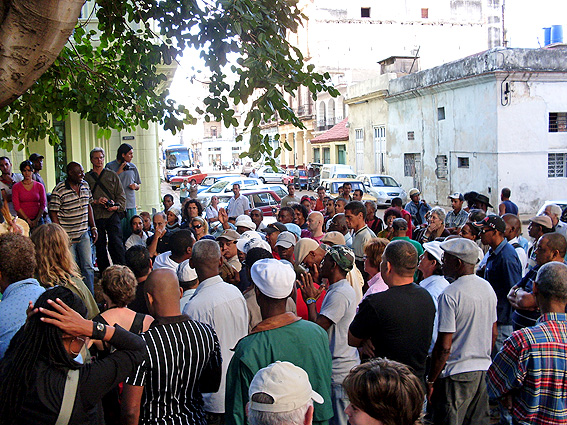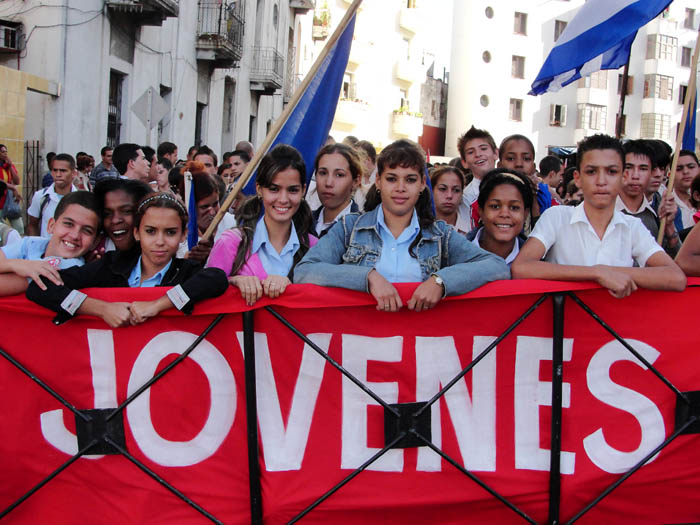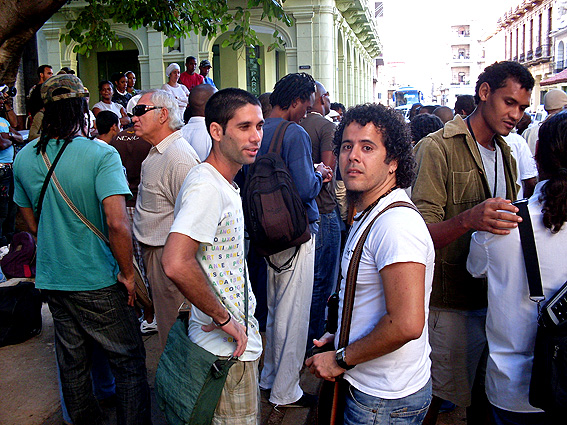Two Related Remembrances in Cuba
By Yusimi Rodriguez
Fotos by Elio Delgado & The Observatorio Critico

HAVANA TIMES, Dec. 19 – November 27 is a day commemorated by most Cubans. On that date, in 1871, eight medical students were murdered by Spanish troops. Every year, Cubans students and others march to recall that day as a way of paying homage to those innocent victims of Spanish colonialism.
This past November 27 was no exception.
The exception occurred the preceding day, on Thursday November 26, when the Granma newspaper published an article on page two by Pedro de la Hoz titled “Those Other Blood Brothers.”
This article recounts the history of the five black “ñáñigos” (members of the secret Afro-Cuban Abakua society) who tried to rescue the medical students from the indiscriminate slaughter that was set to be committed against them. One of the ñáñigos had been raised with one of the students.
The ñáñigos were also slaughtered; they too died on November 27. However, most people in Cuba are unaware that this attempt was made to rescue the students. In schools, history classes recount the circumstances that preceded the executions and the arbitrary way in which the students were seized from their classrooms; these lessons even discuss a Spanish official who opposed the massacre.

But nothing is said about these five black Abakua members. Is this due to a lack of historical knowledge? It’s clear that at least Ernesto “Che” Guevara knew about it, and in 1961 he highlighted that fact by recognizing the brave actions of these black ñáñigos.
For years we’ve been called to emulate Che Guevara; he has been made the example for us to follow. So why wasn’t his example followed much earlier in the rescue of the memory of the five black ñáñigos?
They Had a Choice
For years deserved tributes have been made to those unjustly killed students who didn’t have a chance to defend themselves nor a way of preventing their murders. But the black Abakua members did indeed have a choice. They had the option of not getting involved with the incident, of not challenging the colonial authorities.

They were not so naïve as to be unaware of the slim possibility of success – being five men armed with little more than knives against Spanish troops. Nor could they have been unmindful of the consequences of their being caught – being black men under a colonial, pro-slavery and racist government. Nonetheless, they decided to act.
Others also had the option of sitting on their hands and serving as accomplices to historical omission; but instead they too decided to act. On November 27, 2008, members of the Haydée Santamaría Collective, dignitaries of the Abakua Association of Cuba and members of other Abakua associations, historians, scientists and others decided to join in an act to commemorate the murder of the medical students and to pay homage to the five black ñáñigos who died in the attempt to rescue them.

This year, commemorations were again carried out in Old Havana at the corner of Morro and Colon streets, the site where the first of these black heroes was killed.
This cultural activity had the support of the Africa Center of the Office of the Havana City Historian, the CITMA Institute of Anthropology, the Vivir la Revolución Workshop sponsored by the Juan Marinello Center; the Federation of University Students, the Cofradía de la Negritud (the Negritude Brotherhood) and the Lukumí Ifá Iránlòwò Council.
Click on the thumbnails to see all the photos in this gallery






























I truly believe that when we achieve the socialist Cooperative Republic in the US, we will put and end at last to both monopoly capitalism and racism.
If Cuba can advance to a Cooperative Republic within the next year to two, she can finally put an end to racism in that beautiful country.
Is anyone listening?